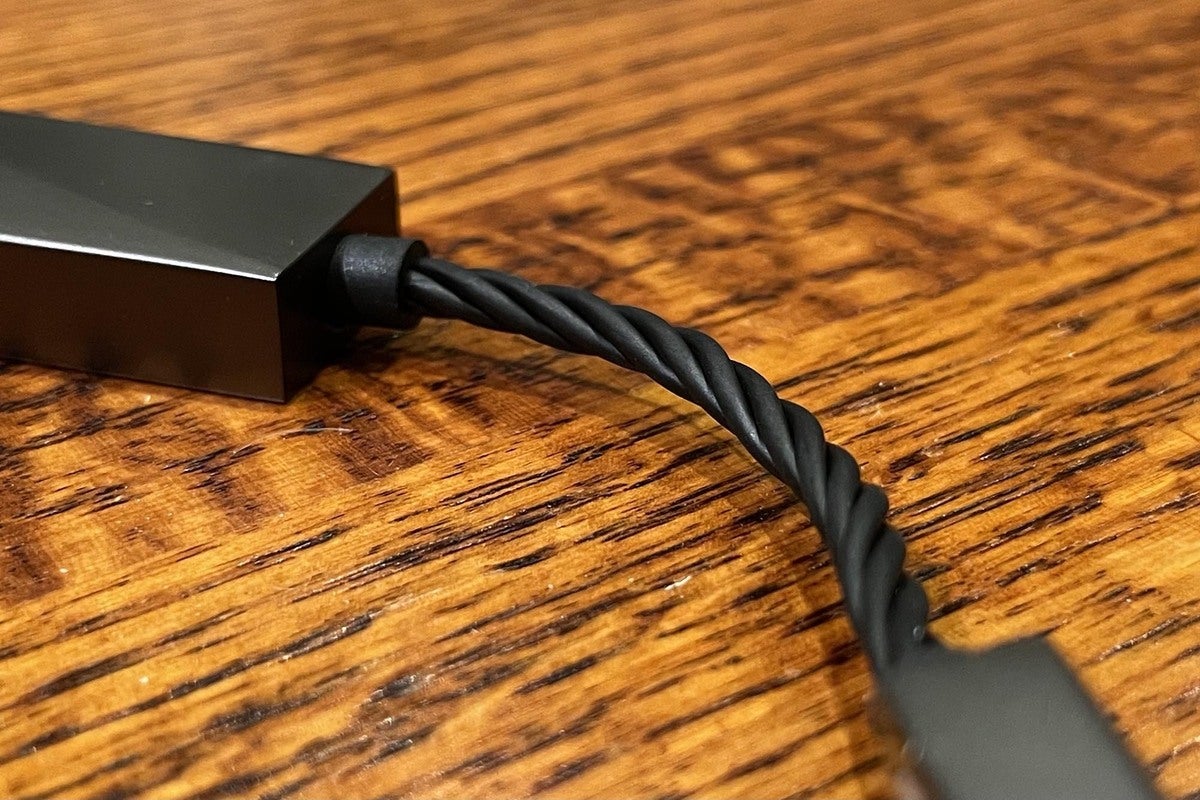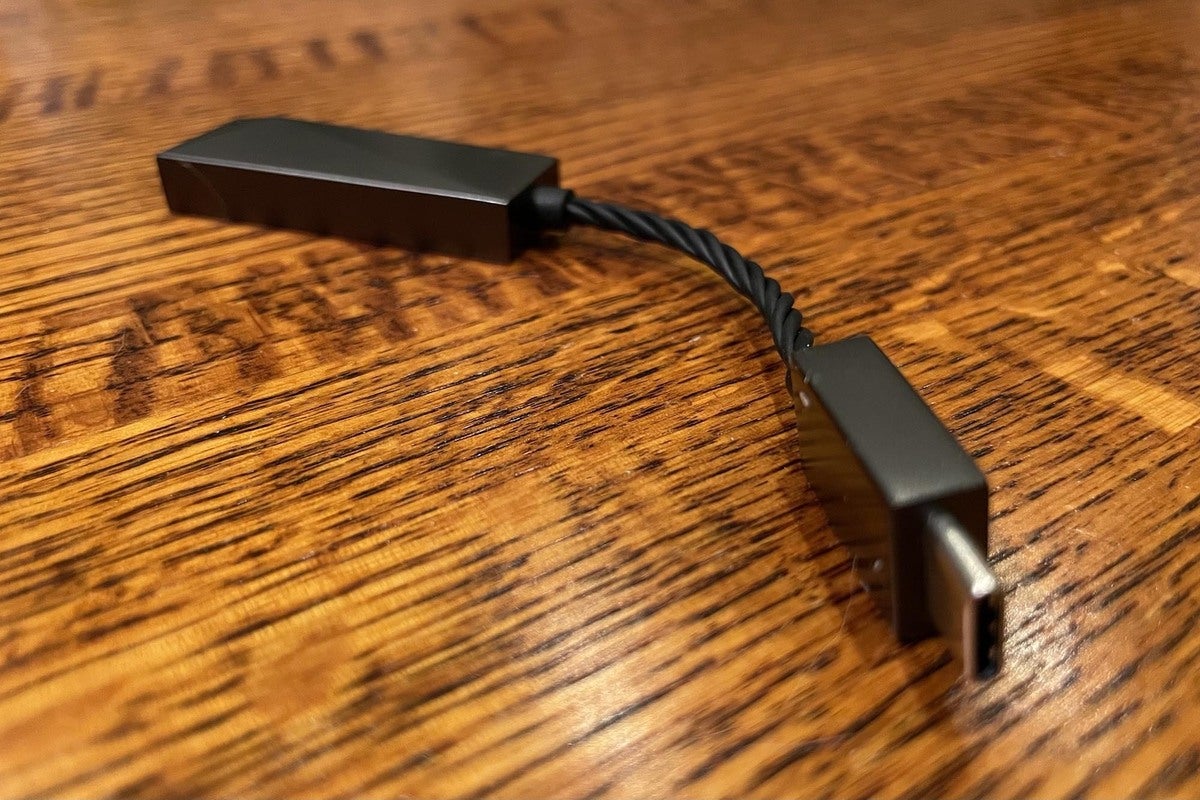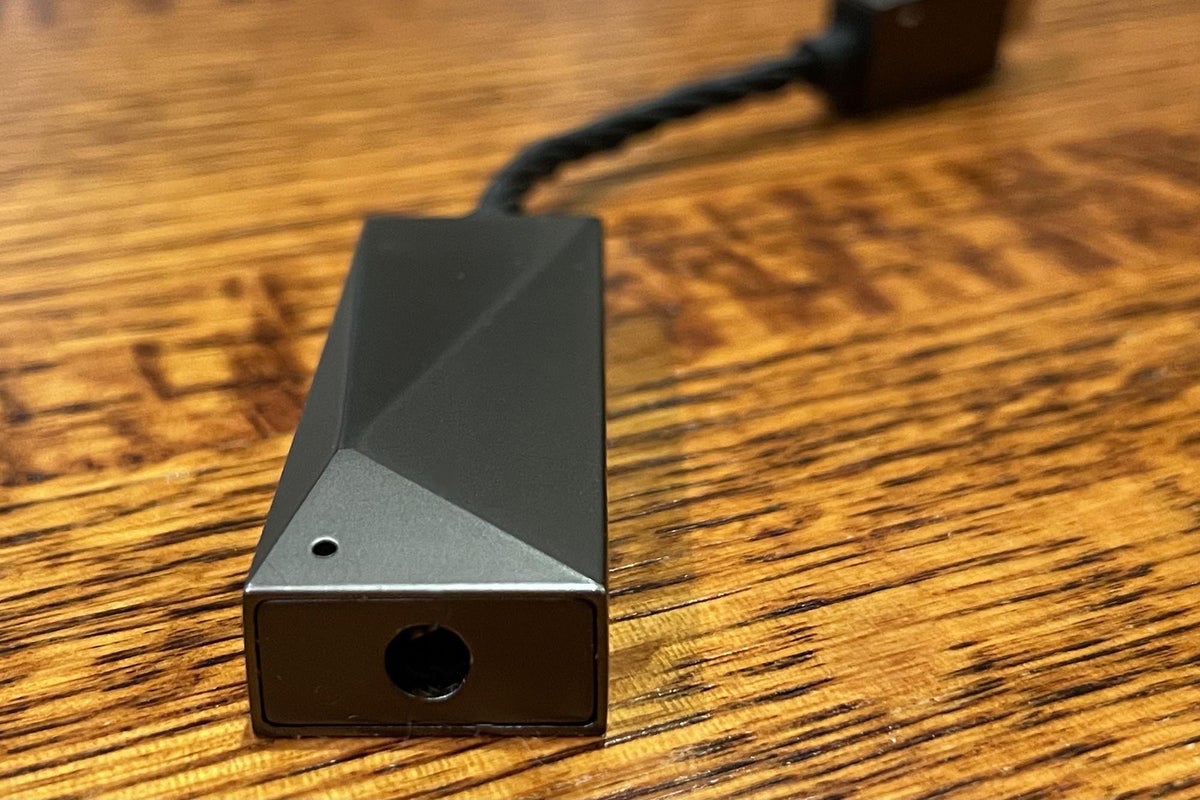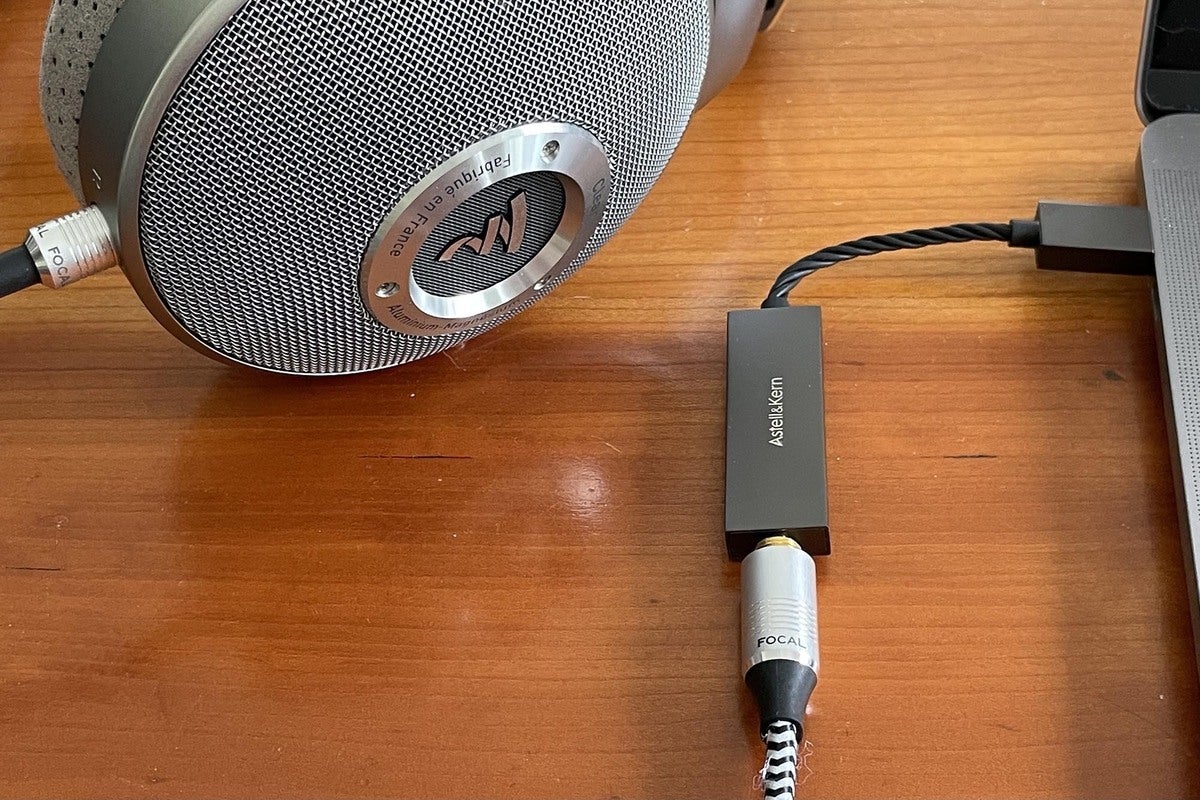Astell&Kern’s USB-C Dual DAC Cable is a simple, modestly priced way to improve your computer or Android device’s audio output, but iPhone users need not apply.
Theo Nicolakis / IDG
Today’s Best Tech Deals
Picked by TechHive’s Editors
Top Deals On Great Products
Picked by Techconnect’s Editors
Astell&Kern USB-C Dual DAC Cable
More and more manufacturers are following Apple’s lead and dropping 3.5mm analog headphone jacks from their small electronic devices. Computer manufacturers, meanwhile, typically treat audio as an afterthought. Sure, you’ll find a headphone jack on your laptop or desktop machine, but the audio circuitry feeding it is invariably one of the cheapest components on that product’s bill of materials.
With its USB-C Dual DAC Cable, Astell&Kern aims to quench music lovers’ and gamers’ thirst for high-quality audio. But you don’t need to be an audiophile to appreciate high-quality audio, and you can get it from compatible devices without giving up an arm and a leg: A&K has priced this ultra-compact gadget at just $149.
Form meets function
The USB-C Dual DAC Cable reveals its Astell&Kern heritage at first glance, sporting company’s characteristically asymetric industrial design. While there’s nothing spectacular about the matte-gray metal used to fabricate its enclosure, there’s all kinds of good stuff inside it.
The wiring tethering the DAC to its USB-C interface is a custom-made, 4-core cable designed by Astell&Kern and reinforced with aramid fiber to withstand up to 200n of tensile force.
 Theo Nicolakis / IDG
Theo Nicolakis / IDGThe cable used in the USB DAC is a custom-made, 4-core cable designed by Astell&Kern.
If your device doesn’t have a USB-C port, you’ll need to purchase a USB-C female to USB-A male adapter. The heart of A&K’s USB-C Dual DAC Cable is a pair of Cirrus Logic CS43198 MasterHiFi DACs. One is dedicated to processing the left audio channel, and the second is dedicated to the right channel. This provides design maximum separation and cross-talk elimination.
The Cirrus Logic DAC supports up to 32-bit/348kHz playback, plus native DSD256 decoding. It features an astonishing 130dB of dynamic range, low power draw, headphone detection, and Popguard to eliminate output transients when the unit is powered on or turned off. The DACs are paired with an analog amplifier that A&K says can pump out 2Vrms.
The A&K USB-C Dual DAC has no battery, so it never needs to be charged. It draws power directly from the connected playback device, so you don’t need to worry about it running out of juice at the least opportune moment.
 Theo Nicolakis / IDG
Theo Nicolakis / IDGThe A&K is powered through its USB-C connector; no charging required.
The downside to this design is that it’s not compatible with iOS devices. You can plug the USB-C Dual DAC Cable into a Windows PC, a Mac, or an Android-powered smartphone or tablet, but you can’t use it with an iPhone. A&K’s user manual points this out, but doesn’t explain why.
I nonetheless tried to plug the USB-C Dual DAC into my iPhone 12 Pro, using Apple’s Lightning-to-USB camera kit adapter, and a warning popped up to inform me the DAC was unavailable because “the attached accessory uses too much power.” Indeed, the power indicator on the Dual DAC simply blinked.
 Theo Nicolakis / IDG
Theo Nicolakis / IDGThe A&K USB-C Dual DAC sports a characteristic Astell&Kern industrial design.
I received no such warning when I plugged the USB-C Dual DAC into my iPad Pro, and didn’t encounter any anomalies, sonic or otherwise, during casual testing. An A&K representative told me that since the company has not yet thoroughly tested the Dual DAC on an iPad, its performance isn’t certified.
Roon Tested
By the time you read this review, Roon should have announced that the A&K USB-C Dual DAC Cable is Roon Tested. The functional Roon certification came during my review period, and once that happened, the A&K USB-C Dual DAC appeared in my Roon software with its proper icon and its device settings, which were now auto-configured.
Listening tests
I tested the Astell&Kern USB-C Dual DAC Cable on a MacBook Pro (2018, 15-inch); on a 2018 Dell Latitude 7490 running Windows 10; and the aforementioned iPad Pro. Since Astell&Kern hasn’t formally endorsed the Dual DAC on an iOS device, however, I did not take my iPad Pro experience into account when calculating my final verdict.
 Theo Nicolakis / IDG
Theo Nicolakis / IDGThe A&K USB-C Dual DAC Cable with a Focal Clear headphone.
The Mac and Windows computers were running Roon 1.8 and connected to my Roon Nucleus, which served up both locally stored media files and content streamed through Tidal. I used Focal Clear, Oppo PM2, Beyerdynamic Amiron Home, B&O Portal, B&W P9 Signature, and Yamaha YH-E700A headphones for this review.
Summarizing the Dual DAC’s overall performance, the A&K Dual DAC brings immediate transparency, dimension, detail, and control to the audio signal that the stock sound cards and audio outputs simply couldn’t match. Playing the opening of Pink Floyd’s classic, “Time” from the iconic album, Dark Side of the Moon, the ticking of the clocks was noticeably cleaner through the A&K Dual DAC—as though a dark veil had been lifted off the headphone’s drivers. This tonal attribute was accentuated more so as the alarm clocks ring out in succession. The A&K USB-C Dual DAC delivered a precise, crisp top end, versus the built-in headphone output that had a far duller and seemingly rolled-off top end.
Adele’s “Send My Love (To Your New Lover)” served as an almost perfect reference song that showcased the differences, which were starker on the Windows 10 box as compared to the Mac. Through the A&K Dual DAC, Adele’s vocals were better defined and more nuanced, more tonally accurate, and stood with a firmer sense of space, time, and air—something especially noticeable at the tail end of the song (at the 3:38 mark). Bass lines on the song were tighter and better defined, with less bass bloat.
The 24-bit/48kHz version of Michael Jackson’s “Smooth Criminal” from Bad is a superbly mixed song that demonstrated the A&K’s superior ability to create a deep, detailed soundstage. The song’s dominant bass lines were more articulate and authoritative through the A&K. The overall tonal character of the song just seemed more “right.”
I will caution that how much of a difference you’ll notice between your source on its own and with the USB-C Dual DAC Cable plugged into it will depend on your headphones. To my ears the Focal Clear and Oppo PM2 rendered more easily discernible differences than the Yamaha YH-E700A. While you should never judge a headphone’s (or as DAC’s) capabilities on price alone, the more revealing your headphones, the greater benefit you’re likely to get from this particular DAC.
Conclusion
Astell&Kern has another winner in the USB-C Dual DAC cable. For a company that sells multi-thousand-dollar digital audio players, the $149 asking price for this product seems like a bargain. The fact that it’s Roon Tested is icing on the cake.
This compact, portable DAC is a spectacular audio companion, whether you’re on the go or relaxing at home. Its high-end DAC and onboard amplifier draw too much power to be connected to an iPhone, but it works great with Android devices as well as MacOS and Windows computers.
Corrected shortly after publication to report that Astell&Kern does not provide a USB-C female to USB-A male adapter, which you’ll need if your device isn’t equipped with a USB-C port. The company sent one iwth our review unit, but it does not include one in the retail package. We regret the error.
Note: When you purchase something after clicking links in our articles, we may earn a small commission. Read our affiliate link policy for more details.
Astell&Kern USB-C Dual DAC Cable
Astell&Kern’s USB-C Dual DAC Cable is a simple, modestly priced means of dramatically improving the audio quality of mobile devices and computers.
Pros
- Superior analog audio vs. built-in sound cards and DACs
- Roon Tested
- Compact, portable form factor that draws power over USB
- Dual 32-bit/384kHz DAC with native DSD256 decoding
Cons
- Draws too much power to be used with an iPhone
- Degree of audible improvement requires a higher-performance headphone
Theo Nicolakis is a C-Level technologist and digital communications professional. He’s also a passionate audiophile and home theater aficionado.

